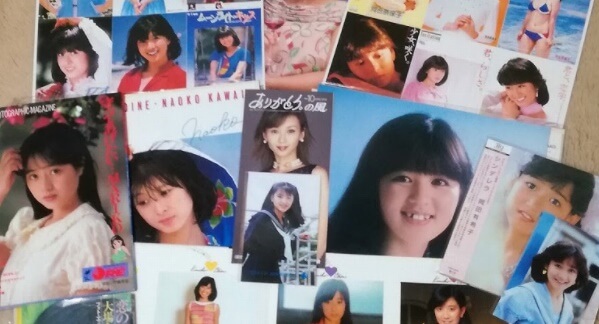Groups
Sakamichi Series: Nogizaka46 Sakurazaka46 Hinatazaka46
WACK Groups: BiSH
Japanese Idols News and Knowledge Base
Japanese Idols News and Knowledge Base

Over the past few decades, Japanese idol groups have become a cultural phenomenon in Japan and beyond. These groups are characterized by their young, attractive members who sing and dance to catchy pop tunes. While Japanese idol groups have been around since the 1970s, the music and style of these groups have evolved significantly over time. In this article, we will take a look at the evolution of Japanese idol group music over the years.
The first Japanese idol group was the all-female group Candies, which formed in 1973. Candies’ music was heavily influenced by Western pop music of the time, particularly the girl groups that were popular in the United States. The group’s sound was characterized by catchy melodies, harmonies, and a bubblegum pop feel.
In the late 1970s, another all-female idol group called Pink Lady became popular. Pink Lady’s music was more disco-influenced, with dance beats and energetic vocals. The group’s fashion and style were also important to their success, as they were known for their colorful outfits and choreographed dance routines.
In the 1980s, Japanese idol groups continued to be popular, and the bubblegum pop sound that Candies helped popularize remained a mainstay. Groups like Onyanko Club and Lemon Angel played up their cute, innocent image and sang upbeat, catchy pop tunes.
In the mid-1980s, the rise of technology brought about a new sound in Japanese idol group music: synth-pop. Idols like Seiko Matsuda and Akina Nakamori used electronic instruments and production techniques to create a more polished, danceable sound. The fashion and style of idol groups also evolved in the 1980s, with brightly-colored hair and makeup becoming more common.
The 1990s saw a shift in Japanese idol group music, as the popularity of grunge and alternative rock began to influence the sound. Idol groups like Morning Musume and Speed incorporated elements of rock and hip-hop into their music, creating a more edgy and contemporary sound. The fashion and style of idol groups also became more varied in the 1990s, with some groups embracing a more punk or goth look.
In the 2000s, Japanese idol group music experienced a resurgence in popularity thanks to the rise of AKB48. AKB48 is a massive all-female idol group that currently has over 100 members. Their music is characterized by catchy hooks, upbeat rhythms, and a blend of pop and rock influences. AKB48 also pioneered the “idol theater” concept, where fans could see the group perform live in a dedicated theater in Akihabara, Tokyo.
The success of AKB48 led to a boom in idol groups in the 2000s and 2010s, with groups like Momoiro Clover Z, Perfume, and Nogizaka46 becoming popular. These groups often had a unique sound and style, with some incorporating elements of traditional Japanese music or heavy metal into their music.
Today, Japanese idol group music continues to evolve and grow in popularity. With the rise of social media and streaming platforms, it’s easier than ever for fans outside of Japan to discover and enjoy this music. In recent years, some Japanese idol groups have even gained international recognition, with groups like BABYMETAL and BiSH performing at festivals and concerts around the world.
In conclusion, Japanese idol group music has come a long way since its inception in the 1970s. While the music and style of idol groups have changed over the years, their appeal to fans has remained constant. Idol groups provide a form of entertainment that is upbeat, catchy, and focused on youth and beauty. Fans are drawn to the energy and positivity of these groups, as well as the connection they feel to the members.
One of the unique aspects of Japanese idol group music is its focus on the fans. Groups often hold events and meet-and-greets where fans can interact with the members, and fans are encouraged to participate in the group’s activities and vote for their favorite members. This close relationship between fans and idols is a key aspect of the Japanese idol group experience.
While some critics have dismissed idol group music as shallow or superficial, its impact on Japanese culture cannot be ignored. Idol groups have inspired fashion trends, influenced advertising and marketing, and provided a platform for young people to showcase their talents and pursue their dreams.
Overall, the evolution of Japanese idol group music over the years reflects the changing tastes and trends of Japanese society. While the music and style of these groups may continue to evolve in the future, their popularity and impact on Japanese culture are sure to remain.